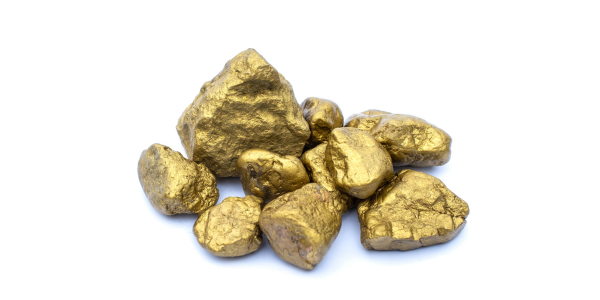There is a lot of information on which precious metals products are the best to buy. There’s also a...
When is Gold Pure Gold?
Does purity matter when it comes to investing in gold? While it’s important to be able to verify and understand the distinction, the difference between a 22k and 24k coin isn’t as a big of a deal as you might think.
How is Gold Purity Measured?
The weight of gold is measured in troy ounces (1 troy ounce = 31.1034768 grams), however its purity is measured in karats, with bullion coins typically between 22k and 24k, and gold jewelry typically around 18k or 14k. Karats apply to the amount of pure gold in a particular piece. 24 refers to parts of 24, or karats, meaning, all 24 parts in the gold are pure gold - sans any other metals.
While 24 parts seems like an odd way to measure mass, this was common in ancient Greece and Rome. Gold fineness in karats comes from karats and grains of gold in a solidus coin. The conversion rate was 24 karats for every 1 solidus coin, with each karat the equivalent of 4 grains of gold.
Purity can also be expressed in fineness and represents the purity in parts per thousand. 24 karat should be 1.0 (24/24 = 1.00). However, in practice, there is likely to be a very slight impurity in any gold, and it can generally only be refined to a fineness level of 999.9 parts per thousand. This is stated as 999.9.

What’s the Difference Between a 22k and 24k Gold Coin?
Most bullion gold coins come in either 22k or 24k gold. 24 karat gold applies only to bullion with over 99.95% pure gold. In both 22k and 24k, a 1 oz. gold coin contains a full troy ounce of gold, but a 22k gold coin contains additional metals to increase its durability. Gold is a very soft and pliable metal, which is why older circulated coins can show so much wear and tear. This combination of metals is known as an alloy, and copper is the most common.
22k gold is approximately 91.67% pure whereas 24k gold is 99.99% pure.
Based on worldwide sales, some of the most popular 22-karat gold coins include the American Eagle (gold with copper and silver added) and the South African Krugerrand (gold with only copper added). Meanwhile the most popular 24-karat gold coins include the Canadian Maple Leaf, Austrian Philharmonic, and Australian Kangaroo.
When it comes to numismatic coins– pre-1933 U.S. gold coins like the Saint-Gaudens Eagle, Liberty Eagle, and Indian Eagle – most contain 90% pure gold. Since these coins were issued and used as currency for centuries, the extra durability and strength provided by a copper alloy was needed. But once again, the gold melt value is the most important factor, especially when dealing with “junk gold” or jewelry grade pre-1933 gold. The wear and tear usually means there is no additional value derived from the rarity or condition of the coins, but a heavily circulated coin contains the same amount of gold as its mint state equivalent.
Ultimately, the purity is way less important than the melt value of the gold bullion product in question, whether that is coins or bars. When melted down, both 22k and 24k coins contain the same amount of gold and provide the same wealth protection benefits to your portfolio.

When Does Purity Matter?
Purity does matter in some cases when it comes to investing in gold.
First, to ensure that the gold you are buying does have the amount of gold it is purported to, always buy from a reputable source. When investing in precious metals, you want to make sure that the gold, silver, platinum, and palladium that you are buying is legitimate. The precious metals industry has developed sophisticated technology to prevent counterfeiting, working tirelessly to make sure their authentic products are easily identifiable and verifiable if you know what to look for. Coins produced by sovereign mints are subjected to rigorous purity testing both in-house and by independent agencies to ensure that all bullion product on the market meets purity standards.
Second, if part of your investing strategy involves including gold in a self-directed IRA, the gold placed with the IRA trustee administrator must meet minimum fineness requirements to be considered eligible. To qualify, gold must be 99.5% pure (with the exception of the American Gold Eagle). Bars, rounds and coins must be produced by a refiner, assayer or manufacturer that is accredited/certified by NYMEX, COMEX, NYSE, LME, LBMA, LPPM, TOCOM, ISO 9000, or a sovereign mint. Certain bullion bars must be manufactured to exact weight specifications.
In most cases, however, the purity of any retail bullion item doesn't make a whole lot of difference at the end of the day. When buying gold from a reputable source, the ounces you own are the most important factor. So, when buying, regardless of whether a coin is 22k or 24k, try to keep your premiums as low as possible above the melt or spot value.
If you’re ready to buy, give us a call at 800-831-0007 or simply send us an email. Or if you're not ready to invest yet, consider giving us a call for a free consultation to see what sort of precious metals investment would be right for your particular needs. You can also buy directly from us at www.assetstrategies.com.




